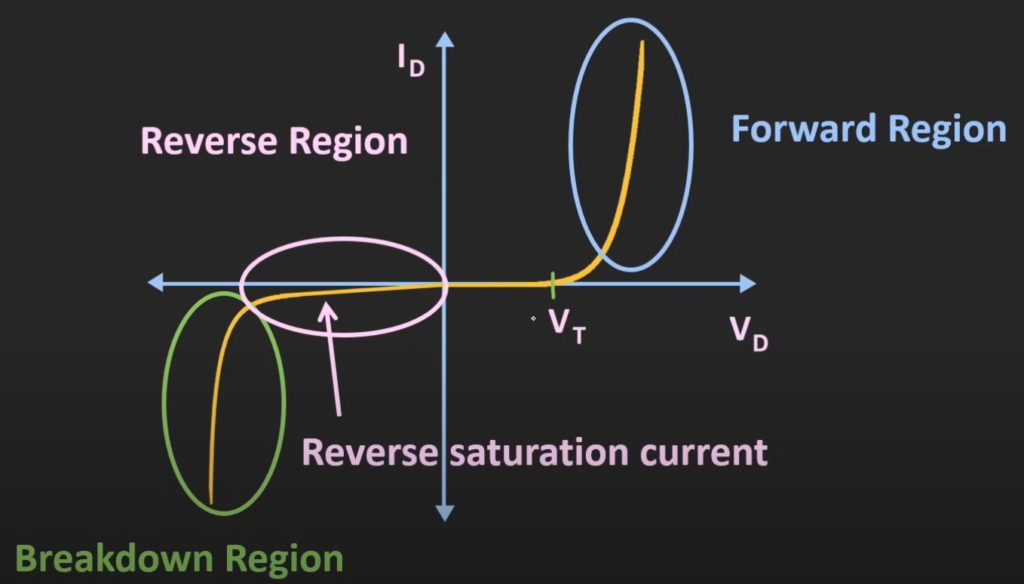A diode is a two-terminal semiconductor device that allows the flow of current in only one direction. One terminal is known as the anode, and the other is the cathode.
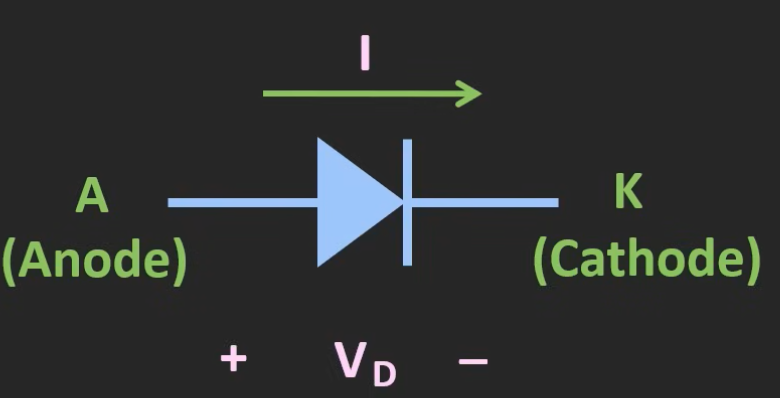
Current can flow from the anode end to the cathode, but not in the other direction.
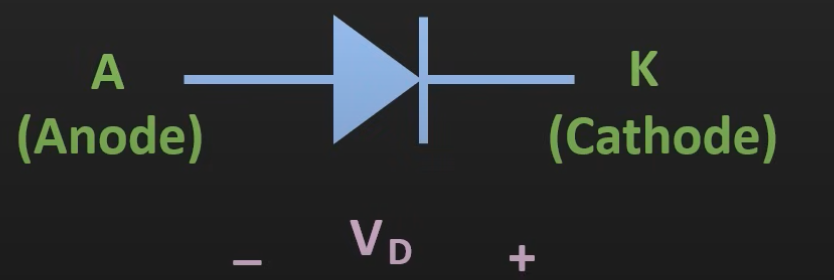
Voltage-Current Graph
The diode is a non-linear element, meaning that the relationship between the voltage and current is not a straight-line relationship. From this graph, we can see that in the reverse direction, the current flowing through the diode is almost negligible.
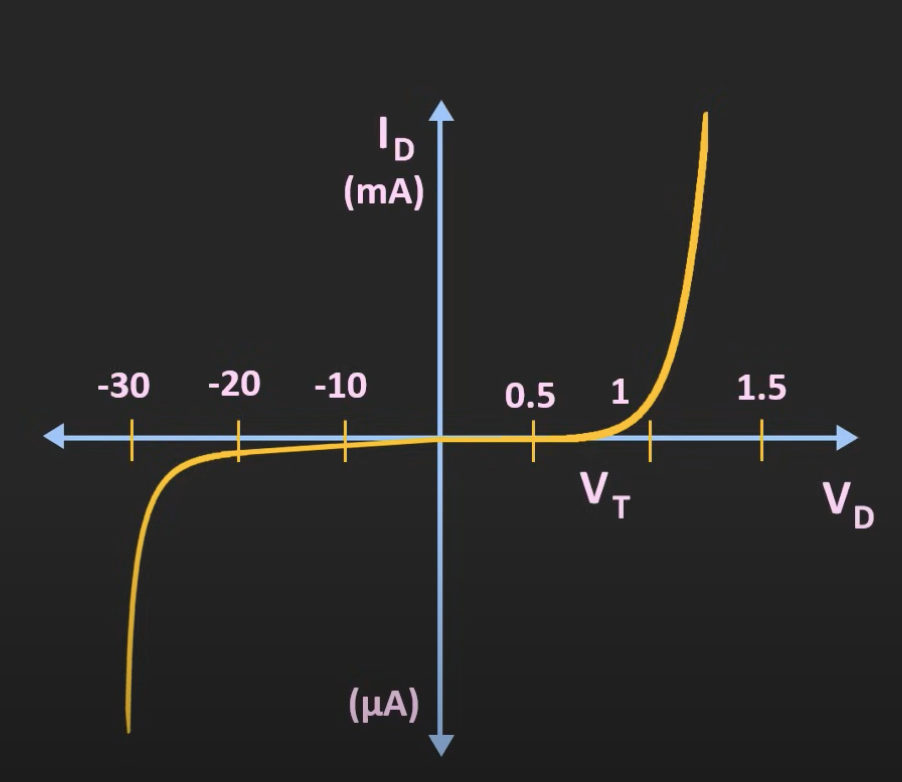
Ideal Diode
For the ideal diode, whenever the voltage applied between the anode and cathode is positive, it will act as a closed switch. On the V-I graph, it would be represented as the verticle line. On the other hand, if the voltage applied is negative, it will act as an open switch which is represented as the horizontal line on the negative V axis.
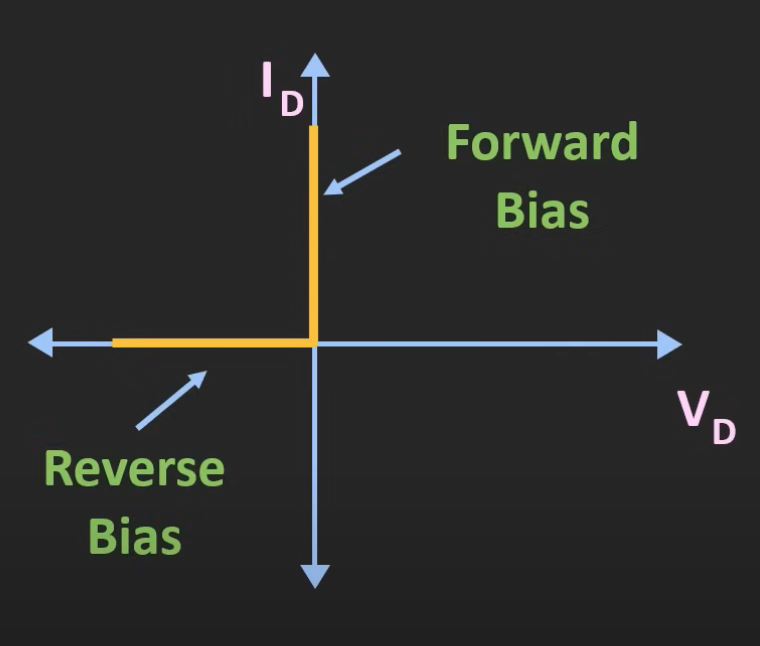
Threshold Voltage / Cut-in Voltage
From the previous graph of the ideal diode, it will start to conduct even if the voltage is small like 0.1V. However, in an actual diode, it will only begin to conduct after the applied voltage crosses some threshold voltage. So the altered V-I graph of the diode would look like the following graph.
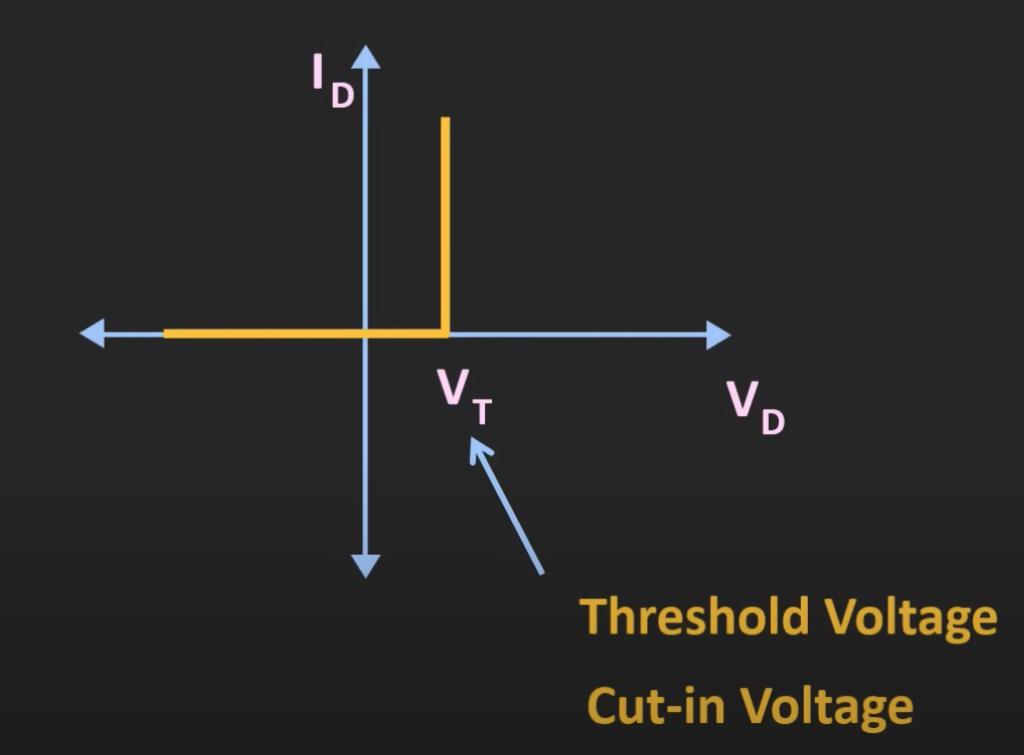
Up to a certain threshold voltage, the diode will not allow any flow of current. The diode will only allow the flow of current when the applied voltage crosses the threshold voltage. For silicon diodes, the threshold voltage is about 0.7V and for germanium diodes, the threshold voltage is about 0.3V.
Resistance
In reality, the diode does have a finite resistance, the vertical part of the V-I graph of the diode would be a slope instead of a vertical line. The resistance of the diode is also known as the bulk resistance or body resistance, meaning that this resistance is offered by the semiconductor device out of which the diode has been made.
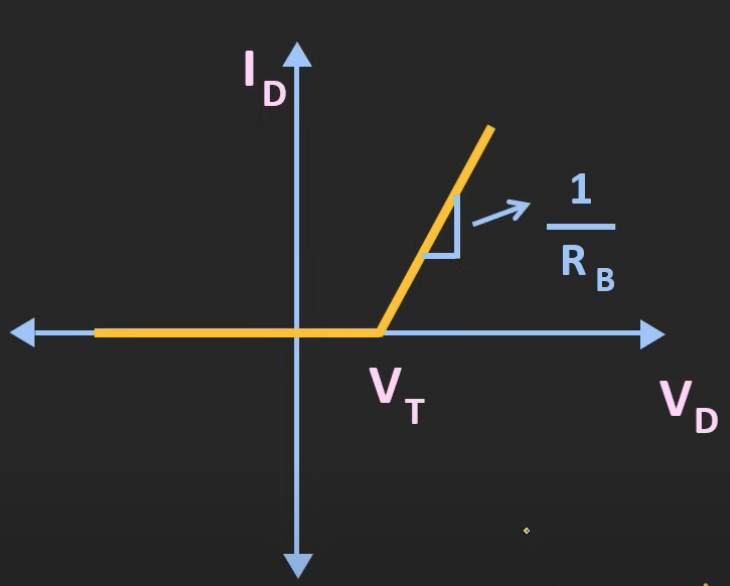
Actual V-I Curve of the Diode
Forward Region of Operation: once the applied voltage crosses the threshold voltage. When the voltage across the diode increases, the current flowing through the diode will increase exponentially.
Reverse Region of Operation: The current flowing through the diode is very small, this current is known as the reverse saturation current of the diode.
Break Down Region of Operation: Typically this region should be avoided but some diodes like zener diode are specifically made to operate in this region.
